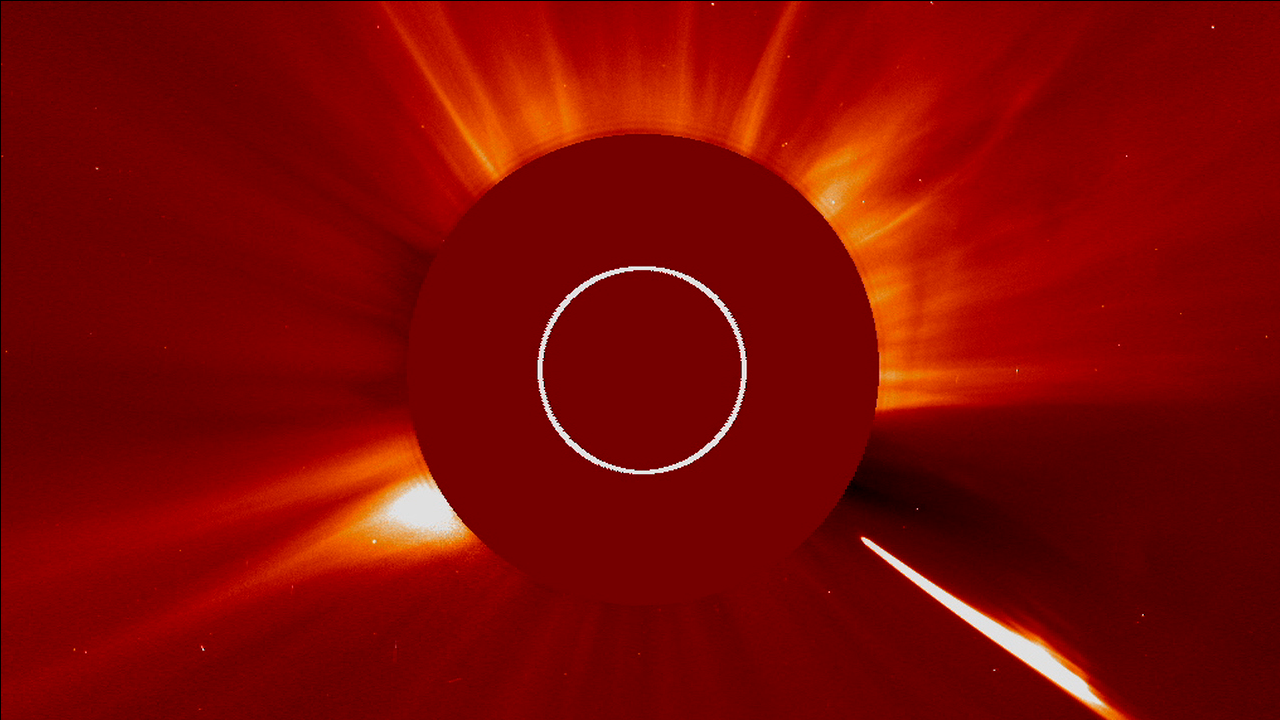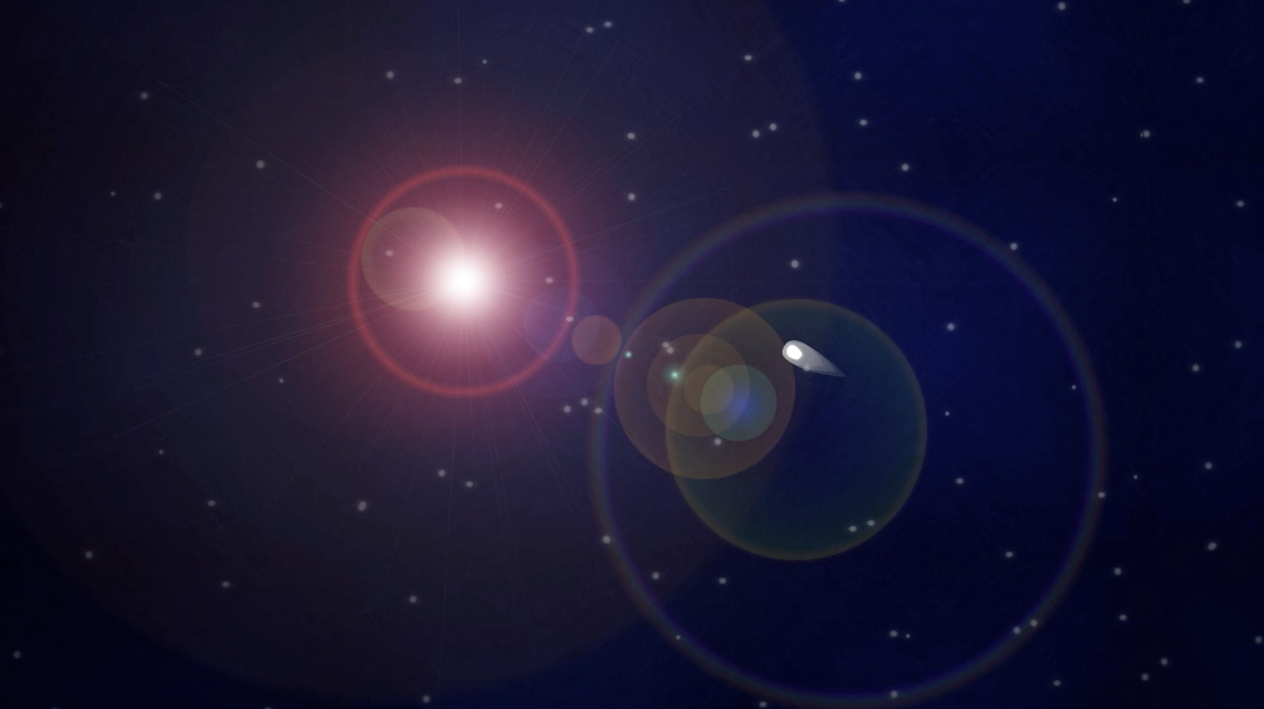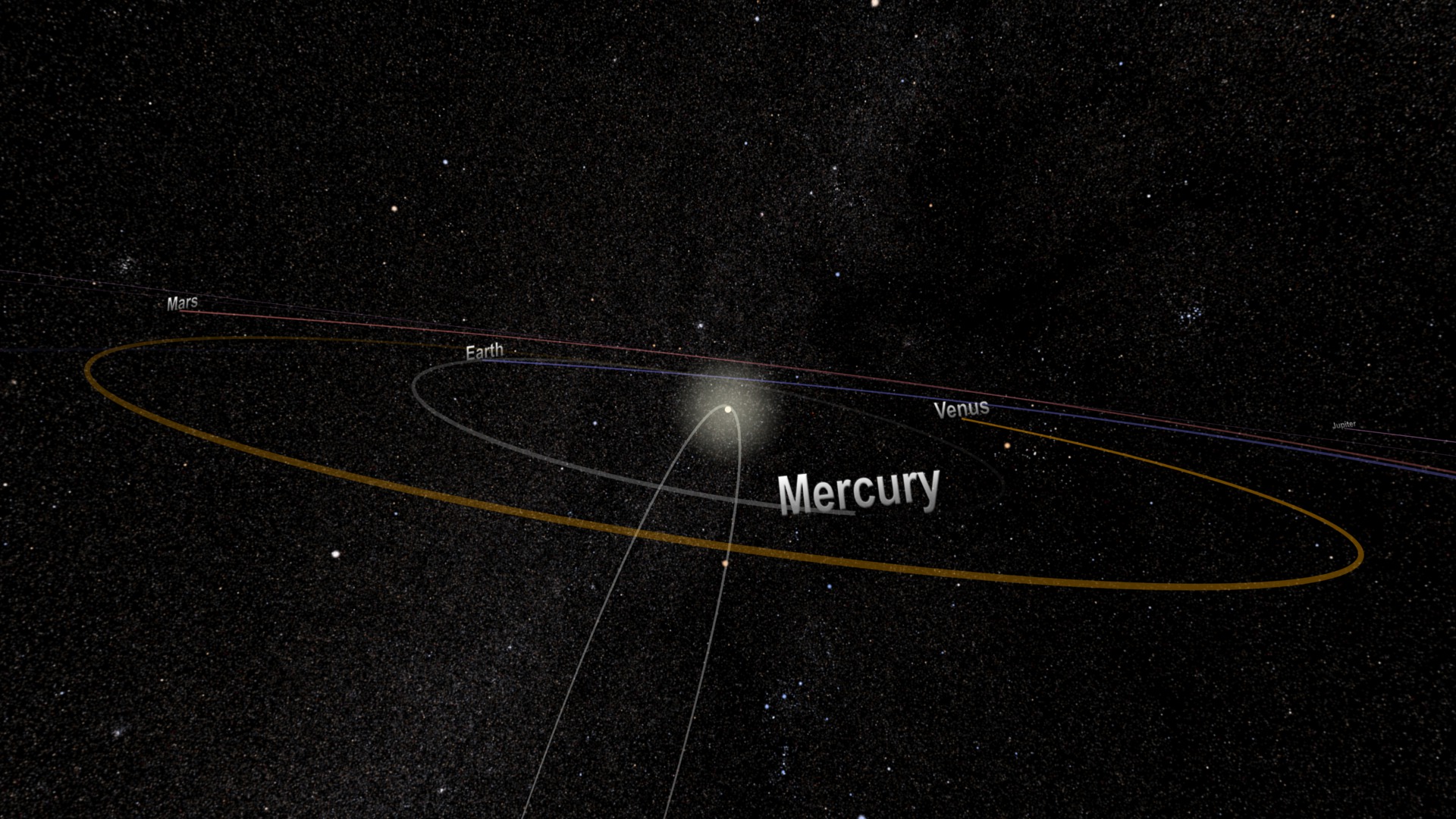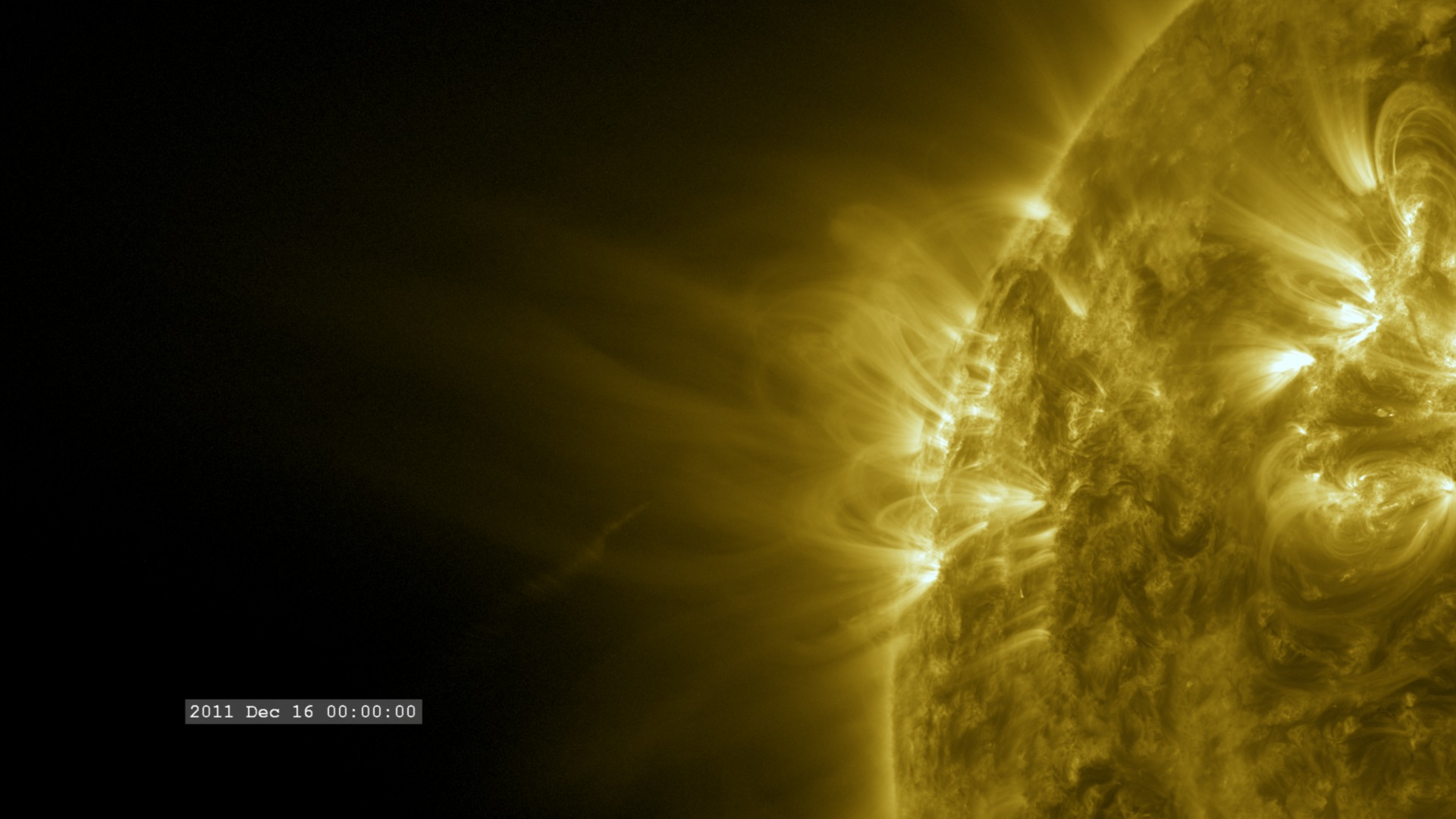How to Cook a Comet
A comet's journey through the solar syste is perilous and violent. Before it reaches Mars - at some 230 million miles away from the sun - the radiation of the sun begins to cook off the frozen water ice directly into gas. This is called sublimation. It is the first step toward breaking the comet apart. If it survives this, the intense radiation and pressure closer to the sun could destroy it altogether.
Animators at NASA's Goddard Space Flight Center in Greenbelt, Md. created this short movie showing how the sun can cook a comet.
Such a journey is currently being made by Comet ISON. It began its trip from the Oort cloud region of our solar system and is now traveling toward the sun. The comet will reach its closest approach to the sun on Thanksgiving Day — Nov. 28, 2013 — skimming just 730,000 miles above the sun’s surface. If it comes around the sun without breaking up, the comet will be visible in the Northern Hemisphere with the naked eye, and from what we see now, ISON is predicted to be a particularly bright and beautiful comet.
Even if the comet does not survive, tracking its journey will help scientists understand what the comet is made of, how it reacts to its environment, and what this explains about the origins of the solar system. Closer to the sun, watching how the comet and its tail interact with the vast solar atmosphere can teach scientists more about the sun itself.
Watch this video on the Goddard YouTube channel.
Credits
Please give credit for this item to:
NASA's Goddard Space Flight Center
-
Animators
- Walt Feimer (HTSI)
- Genna Duberstein (USRA)
-
Video editor
- Genna Duberstein (USRA)
-
Narrator
- Chris Meaney (HTSI)
-
Producer
- Genna Duberstein (USRA)
-
Scientist
- Karl Battams (Naval Research Laboratory)
Release date
This page was originally published on Thursday, November 21, 2013.
This page was last updated on Wednesday, May 3, 2023 at 1:51 PM EDT.
Tapes
The media on this page originally appeared on the following tapes:-
How To Cook a Comet
(ID: 2013083)
Thursday, November 21, 2013 at 5:00AM
Produced by - Will Duquette (NASA)






